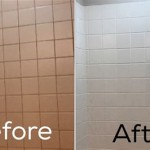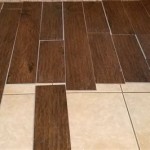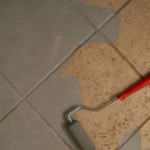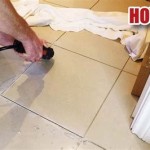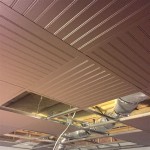Can You Tile Directly Over Concrete? A Comprehensive Guide
The question of whether one can tile directly over concrete is a common one for homeowners and contractors alike. The short answer is yes, you can, but the success of the project hinges on several crucial factors. Properly preparing the concrete surface is paramount, and understanding the potential issues, such as moisture migration and surface imperfections, is essential for achieving a durable and aesthetically pleasing tiled floor or wall.
Directly tiling over concrete can save both time and material costs compared to installing a subfloor or other intermediate layer. However, skipping proper preparation steps can lead to significant problems down the line, including tile cracking, grout failure, and even detachment of the tiles. This article will delve into the key considerations and steps involved in successfully tiling directly over concrete.
Assessing the Concrete Slab: The Foundation of Success
Before even considering tiling, a thorough assessment of the concrete slab is necessary. This involves evaluating several critical factors, including the age of the concrete, its levelness, the presence of cracks, and the moisture content. Ignoring any of these factors can compromise the integrity of the finished tile installation.
Ideally, the concrete slab should be at least 28 days old to allow for proper curing. Newly poured concrete undergoes a chemical hydration process that releases moisture. Premature tiling can trap this moisture, leading to adhesion problems and potential efflorescence, a white, powdery salt deposit that can appear on the surface of the tile and grout.
Levelness is another crucial factor. Significant variations in the concrete surface will translate to uneven tile lines and potential tripping hazards. A level is essential, and for larger areas, a laser level can provide even greater accuracy. Any imperfections greater than 1/4 inch over a 10-foot span need to be addressed before tiling.
Cracks, whether hairline or larger, indicate potential structural issues. Small, non-structural cracks can often be filled with crack isolation membrane or patching compound. However, larger or expanding cracks may require the expertise of a structural engineer to determine the underlying cause and implement appropriate repairs. Ignoring structural cracks will likely result in the tile mirroring the movement of the concrete and cracking along the same lines.
Finally, moisture testing is paramount. Concrete is porous and can absorb moisture from the ground. Excessive moisture can weaken the bond between the tile and the concrete, leading to tile failure. Several methods can be used to test moisture levels, including the calcium chloride test and the relative humidity probe test. The results will determine whether a moisture barrier is necessary before tiling.
Preparing the Concrete Surface: Ensuring Proper Adhesion
Once the concrete slab has been assessed and any necessary repairs have been made, the next step is to prepare the surface for tiling. This involves cleaning, profiling, and applying a primer or bonding agent to ensure proper adhesion between the tile and the concrete.
Thorough cleaning is essential to remove any dirt, dust, grease, oil, or other contaminants that could interfere with the bonding process. Sweeping, vacuuming, and scrubbing with a degreasing cleaner are usually necessary. For particularly stubborn stains or residues, a more aggressive cleaning method, such as pressure washing, may be required. However, it’s crucial to allow the concrete to dry completely after pressure washing before proceeding.
Profiling the concrete surface involves creating a slightly rough texture to provide a better mechanical bond for the tile adhesive. This can be achieved through various methods, including acid etching, grinding, or shot blasting. Acid etching involves applying a diluted solution of muriatic acid to the concrete surface, which dissolves a thin layer of cement paste and creates a rough texture. Grinding uses a diamond grinding wheel to remove the top layer of concrete and expose the aggregate, creating a slightly rough surface. Shot blasting uses a machine to propel small steel or abrasive particles at the concrete surface, creating a textured profile. The choice of method will depend on the condition of the concrete and the type of tile being installed.
After profiling, a primer or bonding agent is typically applied to the concrete surface. This helps to improve the adhesion of the tile adhesive and create a more consistent bond. Primers are typically thin, liquid coatings that penetrate the concrete and seal the surface. Bonding agents are thicker, more viscous materials that create a physical bond between the concrete and the adhesive. The choice between a primer and a bonding agent will depend on the type of tile adhesive being used and the manufacturer's recommendations.
Selecting the Right Materials: Mortar, Grout, and Tile Considerations
Choosing the right materials is just as important as preparing the concrete surface. Selecting the appropriate mortar, grout, and tile for the specific application will ensure a long-lasting and durable tiled surface.
The mortar, also known as thin-set, is used to bond the tile to the concrete. There are various types of mortar available, each with different properties and intended uses. Modified thin-set mortars, which contain polymers, are generally recommended for tiling over concrete. These mortars offer improved adhesion, flexibility, and water resistance compared to unmodified mortars. Choosing a mortar specifically designed for large format tiles or natural stone can further enhance the performance of the installation.
The grout fills the spaces between the tiles and helps to protect the edges of the tiles from damage. There are two main types of grout: sanded and unsanded. Sanded grout is used for wider grout joints (typically 1/8 inch or wider), while unsanded grout is used for narrower grout joints. Epoxy grouts offer superior stain resistance and durability compared to cement-based grouts but are more expensive and require more skill to install. Selecting a grout that is appropriate for the environment (e.g., waterproof grout for showers) is crucial.
The type of tile also plays a role in the success of the installation. Porcelain tiles are generally more durable and water-resistant than ceramic tiles, making them a better choice for high-traffic areas or areas exposed to moisture. Natural stone tiles, such as granite or marble, require special considerations, including the use of a sealant to protect them from staining. The size and weight of the tile should also be considered when selecting the mortar. Larger, heavier tiles may require a thicker mortar bed to ensure proper support and prevent lippage (uneven tile edges).
Furthermore, consider the coefficient of friction (COF) rating of the tile, especially for floor tiles. A higher COF indicates a more slip-resistant surface, which is particularly important in areas where water or spills are common. Choosing tiles with a suitable COF can help prevent accidents and improve safety.
In summary, tiling directly over concrete is a feasible option, provided that careful attention is paid to the preparation and material selection. Proper assessment of the concrete slab, thorough surface preparation, and the use of appropriate mortar, grout, and tile are all essential for a successful and long-lasting tile installation. Ignoring these factors can lead to costly repairs and premature failure of the tiled surface.

How To Install Tile Over Concrete Greenbuildingadvisor
:max_bytes(150000):strip_icc()/can-you-install-tile-directly-on-concrete-1822600-04-458f7bb6c78348c1835cf8054ef36553.jpg?strip=all)
How To Install Tile Over Concrete
How To Install Tiles On Concrete Floors Stonesuper
How To Tile Onto Concrete Floors Porcelain Super
:max_bytes(150000):strip_icc()/can-you-install-tile-directly-on-concrete-1822600-01-8a89ceab1a274fb8ac81890ab7fc6b1b.jpg?strip=all)
How To Install Tile Over Concrete

How To Lay Tile On Concrete With Pictures Wikihow

Can I Set Tile Directly Over A Concrete Floor

Can I Set Tile Directly Over A Concrete Floor

How To Lay Floor Tiles On Concrete Welcome The Rubi Tools Blog

How To Install Ceramic Tiles On Concrete Floor Tile Installation
Related Posts

